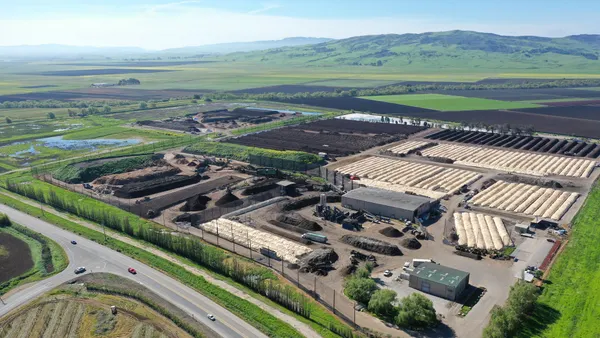Dive Brief:
- Titus MRF Services is closing its secondary sorting facility in Los Angeles this month, after running a multi-year demonstration period and attempting to launch larger sites on the West Coast. The company is known for sorting MRF residual streams to capture salable quantities of plastics and other commodities.
- According to Titus, a combination of tough commodity prices, rising rent and a decline in available volumes due to temporary MRF closures and economic shifts put it over the edge. "This is the lowest I've experienced overall commodity pricing," said President Mike Centers. "It's going to change the way we provide sorting services to cities in the future."
- The company is teaming up with the American Chemistry Council (ACC) on a Northeast Secondary Sortation Project auditing container line residuals shipped to Fontana, California from MRFs in Connecticut, Maine, Massachusetts, New York and Vermont to gather data on potential opportunities in their residual streams.
Dive Insight:
As MRFs look to maximize the efficiency of their operations, and the plastics sector looks for ways to improve recovery rates and outcomes for its products, the secondary sorting concept has long been pursued in multiple forms but not yet scaled up successfully.
With a background in providing equipment and services to MRFs, Titus launched its secondary sorting concept at a Los Angeles site in 2012. The operation was set up to handle 1,200 tons per month, based on a single shift schedule, and accepted residual streams from regional MRFs.
The original model involved a sorting fee charged by Titus, with up to 80% of recovered commodity revenue shared with MRF customers. Roughly half of the residuals coming from California customers had recoverable commodities that had been missed by equipment or not prioritized due to smaller quantities.
The company's goal was to launch multiple large-scale secondary MRFs on the West Coast, but financing and other factors have yet to align. Markets have become more turbulent in recent years due to export restrictions on mixed plastics in certain countries, though Centers said international trade changes were not a major issue because Titus sorted material by type. He noted the company had domestic buyers for PET containers, PET clamshells, polypropylene, HDPE color and HDPE natural.
"We would not ship mixed plastics overseas and we never have. We think that’s an environmental risk," said Centers, noting sorted HDPE color may have occasionally been exported via a broker in the past.
Titus previously partnered with the Plastics Industry Association and others on a similar secondary sorting pilot in the Portland, Oregon area last year using portable equipment. The study concluded an estimated 50,000 tons of additional material could be recovered annually in the Oregon and Washington region if a large-scale facility were to built. Mixed paper and polypropylene were among the most prevalent commodities recovered.
Joshua Baca, vice president of ACC's plastics division, said the expectation is this latest study could "generate value by providing new learnings as well as reinforcing conclusions demonstrated in the previous study." If the original findings bear out in another region, that could be used to show the concept might apply around the country.
Asked how this would affect the underlying market dynamics that have played a role in limiting this concept at scale, Baca pointed to various savings for MRFs and the potential to reduce costs if a larger secondary sorting operation were built. He also highlighted one key element ACC is pursuing as part of 2040 goals that it believes could change the value equation: chemical recycling.
"Rapidly emerging advanced recycling technologies are already converting a wide variety of post-use plastics typically not recycled today into their original building blocks, specialty polymers, feedstocks for new plastics, fuels, and other valuable products," said Baca via email. "Advanced recycling technologies, also called chemical recycling, are key to helping us achieve our objectives for this project and to achieve a circular economy for plastics."
Baca cited a 2019 Closed Loop Partners report that highlighted market potential in this area. A recent report from that group on circular economy trends revisited chemical or advanced recycling as one possible path for certain plastics, while also citing "unanswered questions" about its environmental and health effects. Skeptics say it has so far focused more on turning plastics into fuel, rather than the more circular outcomes of creating monomers for new plastics.
While commodity values remain challenging for many plastics, Titus thinks more brand commitments around using recycled content and the ongoing industry shift to a service-based processing cost model that relies less on commodity values could be positive for its plans. If built, the company envisions its first large secondary MRF as a $16 million project that could handle 8,000-9,000 tons per month based on a minimum of two shifts.
"We've gotten to a point where people I think understand the path forward and we’re starting to see investors come back and we’ve got a steady interest in the full-scale facility again," said Scott Farling, vice president of business development and research at Titus.











